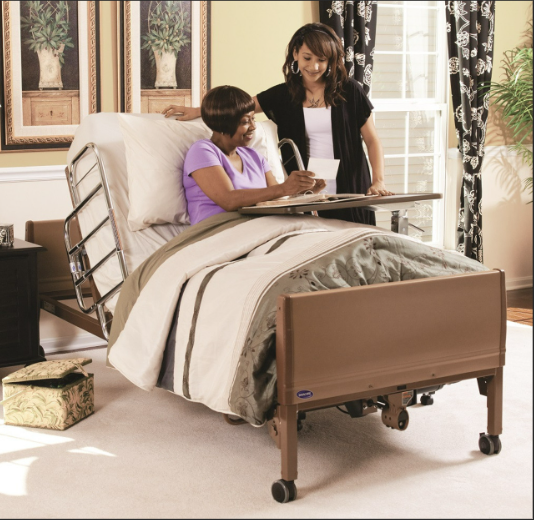
Setting up a hospital bed at home is a crucial decision for individuals seeking to provide personalized care and comfort in a home healthcare environment. Understanding the pros and cons of DIY versus professional installation is essential to make an informed choice. This article will delve into the benefits and drawbacks of both methods, offering valuable tips and insights to ensure a comfortable and safe home healthcare environment.
Table of Contents
Pros and Cons of Setting Up a Hospital Bed at Home
A. Pros
B. Cons
DIY Installation Tips for Hospital Beds
A. Assessing the Space and Requirements
B. Assembly and Setup Process
C. Maintenance and Troubleshooting
Benefits of Professional Installation for Hospital Beds
A. Expertise and Precision
B. Technical Support and Assistance
C. Time-Saving and Convenience
Conclusion
FAQ
Pros and Cons of Setting Up a Hospital Bed at Home
Setting up a hospital bed at home can offer significant benefits but also comes with its own set of challenges. Here’s a closer look at the pros and cons:
A. Pros
- Convenience for the Patient and Caregiver: Installing a hospital bed at home provides convenience for the patient, allowing them to receive care in a familiar environment. Caregivers also benefit from the ease of access when attending to the patient’s needs.
- Cost-Effectiveness in the Long Run: Setting up a hospital bed at home can be cost-effective in the long run, especially for patients requiring extended care. It eliminates the recurring expenses associated with hospital stays.
- Personalized Care and Comfort: A home environment allows for personalized care and comfort, promoting a sense of familiarity and emotional well-being for the patient.
B. Cons
- Potential Challenges in Installation and Maintenance: DIY installation may pose challenges in correctly setting up the hospital bed and ensuring its proper maintenance over time.
- Safety Concerns Related to Incorrect Setup: Incorrectly setting up a hospital bed at home can pose safety concerns for the patient, highlighting the importance of proper installation.
- Limited Availability of Technical Support: DIY installation may lack the availability of immediate technical support, making it challenging to address potential issues promptly.
DIY Installation Tips for Hospital Beds
A. Assessing the Space and Requirements
- Measuring the Room and Determining the Best Location for the Bed: Properly measuring the room and identifying the optimal location for the hospital bed is crucial for creating a safe and accessible environment.
- Understanding Power Source and Access to Medical Equipment: Assessing the power source and ensuring easy access to medical equipment are essential considerations for a successful DIY installation.
B. Assembly and Setup Process
- Step-by-Step Guide for Assembling the Hospital Bed: Following a detailed step-by-step guide for assembling the hospital bed ensures a secure and functional setup at home.
- Safety Precautions and Guidelines for Secure Installation: Implementing safety precautions and adhering to guidelines during the setup process is vital for maintaining a safe environment.
C. Maintenance and Troubleshooting
- Regular Maintenance Tips for Ensuring the Bed’s Functionality: Implementing regular maintenance practices is essential for preserving the functionality and longevity of the hospital bed.
- Common Issues and Troubleshooting Techniques for DIY Setup: Being equipped with knowledge of common issues and troubleshooting techniques empowers individuals to address potential problems effectively.
Benefits of Professional Installation for Hospital Beds
A. Expertise and Precision
- Trained Professionals Ensuring Correct Setup and Functionality: Professional installation ensures that trained experts handle the setup process with precision, reducing the risk of errors.
- Reducing the Risk of Errors and Safety Hazards: Professional installation minimizes the risk of errors and safety hazards associated with incorrect setup.
B. Technical Support and Assistance
- Access to Ongoing Technical Support and Maintenance Services: Professional installation offers access to ongoing technical support, providing peace of mind for the patient and caregiver.
- Peace of Mind for the Patient and Caregiver: Knowing that professional assistance is readily available alleviates the concerns related to technical issues and maintenance.
C. Time-Saving and Convenience
- Avoiding the Complexities and Time-Consuming Aspects of DIY Installation: Professional installation saves time and effort by eliminating the complexities associated with DIY setup.
- Focus on Patient Care without the Burden of Setup and Maintenance: With professional installation, the focus can be directed towards patient care without the added burden of setup and maintenance.
Conclusion
In conclusion, the decision to set up a hospital bed at home requires careful consideration of the installation approach. Whether opting for DIY or professional installation, prioritizing a comfortable and safe home healthcare environment is paramount. By weighing the pros and cons and understanding the available options, individuals can make informed decisions that cater to their specific needs.
FAQ
Q: What are the benefits of DIY hospital bed installation?
A: DIY installation can be more cost-effective and convenient, providing personalized care and comfort for the patient in a familiar environment.
Q: Why choose professional installation for a hospital bed?
A: Professional installation ensures precision, reduces safety hazards, and provides ongoing technical support, making it ideal for those seeking peace of mind.
Q: What are the common issues faced during DIY hospital bed setup?
A: Common issues include incorrect assembly, maintenance challenges, and lack of immediate technical support.
Q: How can professional installation save time and effort?
A: Professional installation avoids the complexities and time-consuming aspects of DIY setup, allowing caregivers to focus on patient care.
Explore the pros and cons of DIY vs. professional installation for hospital beds at home. Find valuable tips and insights for setting up a comfortable and safe home healthcare environment.

